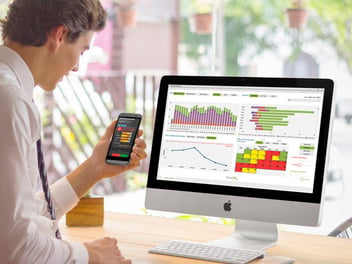Elevate Your Hotel Data to Business Intelligence
Read More
Business Intelligence (BI) is the process of using technology to collect and transform data (often from many different sources) into reporting and analytics that yield actionable insights. When we apply BI in the context of hotel sales, marketing and revenue management, there are a number of different areas in which we can gain more clarity. One such area – which is timely to consider given the upcoming RFP season – is assessing the performance of our corporate negotiated accounts.
Typically, most hotels and hotel companies have little to go on here beyond a seasonal analysis of the historical production of room nights and revenue of each account. Here we’ll offer some suggestions beyond this base-level analysis for gaining insight into the true value of an account for your hotel or organization. In each instance, business intelligence facilitates discovery – either by providing the number-crunching horsepower required for data-intensive calculations, or by seamlessly aggregating data from multiple disparate sources.
This being said, here are some suggestions for applying hotel business intelligence to the process of assessing account performance. While we’ve referenced the upcoming corporate RFP season, these points are also valid for analyzing the value of other accounts, such as wholesale partners or OTAs:
Consider production relative to demand
One of the most important yet often overlooked aspects of account production is when an account produces. Not just in terms of seasonality, but rather production relative to demand. Did the account produce when the hotel actually needed the business, or only when the market experienced compression? Calculate the percentage of each account’s room night production that came on nights that were sold out (or very close to being sold out – say 98% occupancy or above). It will become readily apparent which accounts are producing business when the hotel actually needs it, and which (particularly if they have “last room availability” status) may be loyal to a competitor until the market is compressed. This is critical information to have when negotiating corporate rates.
Include F&B and Ancillary spend
In addition to rooms revenue, it’s important to understand how much guests have spent elsewhere in the hotel during their stay. Having this information at the account level is again a matter of harnessing the power of business intelligence to provide this often-missing granularity. For each account (and for the negotiated corporate market segment as a whole) determine for each dollar spent on rooms, how much was spent on food & beverage and ancillary items/services. This provides for another measure of relative account worth, and also establishes a baseline for each account which can be measured over time. Ideally, we would find ways to increase this spend moving forward.
Scrutinize room type utilization
To fully understand the effect of an account on the hotel’s overall revenue potential, we must also understand how the account utilizes our available inventory. For each room type class (Standard, Deluxe, etc.) that we offer with a negotiated rate, we should understand the percentage of the account’s business that is booked into that room type class. At the account level, this may help us find opportunities to generate incremental revenue through adjusted pricing. At the segment level (for instance, the negotiated corporate segment as a whole) such scrutiny can often lead to inventory management revelations. We may find information that suggests that we should not offer discounted negotiated rates on premium room classes. Conversely, we may find that doing so – at the right price levels – is a good way to move distressed premium room type inventory. In any case, to make such an assessment we need to understand exactly how our segments and accounts are utilizing our room types. Ideally, we would also be able to discern “booked” class (the room class that was reserved) versus “consumed” class (the room class that was actually occupied by the guest).
Understand production patterns in detail
Apart from just seasonal production, there is much to be learned about the patterns of when and how accounts stay with us. Day-of-week patterns may seem obvious for the corporate negotiated segment as we would typically expect peak production in the middle of the working week. However, at the account level it can be revealing to study these patterns. Understand the day-of-week stay pattern of each negotiated account relative to the segment as a whole. An account that produces incrementally more business on shoulder nights than the average account (even though they may still have a mid-week peak) has a unique value to consider. Similarly, an account that produces a longer length-of-stay (provided, to our earlier points, that the business comes when we want it) may indeed have additional worth to us. And finally, “lead time” is an important aspect of account production to consider. How far in advance does the account produce, and is this helpful or harmful relative to our needs? There could be something said for accounts that produce far enough in advance for us to build a comfortable base of business and facilitate forecasting. Conversely, depending on the market and circumstances, perhaps late-booking accounts are desirable to fill rooms otherwise unsold
These are just a few of the considerations to be taken into account when utilizing hotel business intelligence to assess account performance. And though the focus of this article was on assessing corporate negotiated account performance specifically, such analysis can and should be applied to the full spectrum of a hotel’s negotiated business – including corporate, OTA and wholesale.
The common thread that runs through each point we’ve looked at here is that insight is to be gained from very granular analysis which by its nature is data-intensive. Further, depending on the subject matter being analyzed, multiple data sources may need to be consolidated for a seamless view. Mastering such data is the domain of hotel business intelligence.
%20(1).png?width=400&height=124&name=21051_HotelIQ_logo_BJ_PB_DM_GR-05%20(1)%20(1).png)




Comments